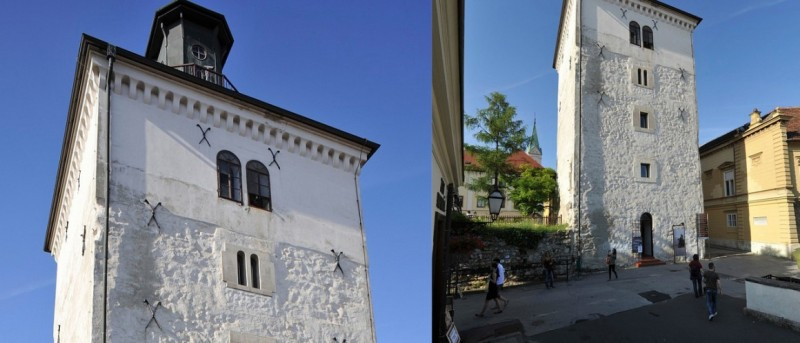If we leave out the hills in one part of the town, Zagreb is a perfect town for cycling. vid Byrne (Talking Heads) on releasing his book Cycling Diaries
Source: www.mvinfo.hr

Issuing the Golden Bull of 1242, Bela IV, the king of Hungary and Croatia, returned the favor to the town of Gradec for providing hospitality and shelter while escaping from the Tatars. By this Bull, the town was proclaimed a royal free city, but at the same time, the Bull obligated the citizens to fortify their town with walls and towers. The construction of the fortification lasted twenty years and it was finally finished in 1266. It was then when the Lotrščak Tower was built to guard the southern gate of the town - a former small gate Dverce - which was demolished in 1812, during the reconstruction of the southern promenade, today called the Strossmayer Promenade.
The name of the tower is derived from the name for the bell, campana latrunculorum – thieves’ bell, which rang in the evening to signal the closing of the town gates. The way the tower looked in the Middle Ages isn’t well known to us. According to some old drawings, it seemed to have had only two floors with two windows on each floor and a four-sided roof. The entrance to the ground floor was on the north side and the outside stairs led to the first floor.
At the end of the 16th century the threat of the Ottoman attacks finally subsided and the tower lost its original defensive purpose.
Over the centuries, the new users and new purposes changed its appearance. The most significant changes date back to 1857. The restoration of medieval buildings during Romanticism resulted in addition of two more floors and a wooden fire lookout tower on the roof.
The communication between the floors, originally nonexistent, was solved in an interesting way: on the north side a winding staircase was added, half of it being inside the building, and the other half being outside. The tower is made of irregular stones, and the thickness of the walls is 195 cm. A wide groin vault on the ground floor is still preserved. The fourth floor was made of bricks, and the walls are significantly thinner.
An interesting fact in the history of the Lotrščak Tower is that when the town had no money for the repairs and maintenance, they would lease it to the citizens making the maintenance their obligation, and in case of enemy attacks, they would be required to give it back to the city for defense.